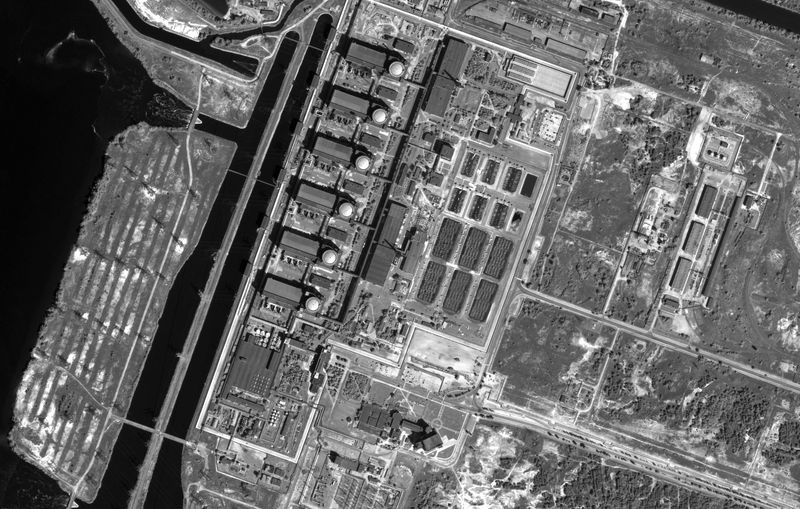Factbox-Ukraine’s battlefield nuclear plant: what are the risks?
2022.08.19 17:42

An overview of the Zaporizhzhia Nuclear Power Plant, outside the Russian-controlled city of Enerhodar in the Zaporizhzhia region, Ukraine, in this picture released on August 18, 2022. Russian Defence Ministry/Handout via REUTERS
(Reuters) – The world nuclear watchdog has said fighting around the Zaporizhia nuclear power plant in Ukraine is “very alarming” and that it urgently needs to send inspectors to assess the risks.
These are some of those risks, outlined to Reuters by technicians at the plant, the head of Ukraine’s state nuclear power firm and other experts:
POWER CUT
The pumps that cool the reactor core and spent fuel pools need electricity to function. The prospect that electricity lines to the plant could be severed is a constant fear, a technician at the plant has said. There are back-up diesel generators but it is not clear how much diesel is on site.
Ukraine said Russian shelling in early August damaged three power lines that connect the plant to the Ukrainian grid and warned on Friday that Russia planned “a large-scale provocation” to justify decoupling the plant from Ukraine’s power grid entirely and connecting it to Russia’s. Russia has blamed the shelling on Ukraine, and said Kyiv is planning a “provocation”.
Decoupling and reconnecting the plant is a technically difficult process, Petro Kotin, head of Ukraine’s nuclear power operator Energoatom, has told Reuters.
Energoatom said on Friday the Russian military was looking for diesel supplies to keep the nuclear fuel cooling systems going once the external power supply was cut.
If cooling systems failed, the nuclear reaction would slow but a reactor would heat up very swiftly. At such high temperatures, hydrogen could be released from the zirconium cladding and the reactor could start to melt down.
PRESSURE ON WORKERS
Staff at the plant have told Reuters they are working under the barrels of Russian guns and are sometimes not allowed home after their shifts. Two of the six reactors are functioning, but all need important safety maintenance, one technician said.
The Russian defence ministry did not respond to a request for comment.
Kotin has said the staff are working under “intense psychological and physical pressure” and that the plant needs urgent renovation.
International Atomic Energy chief Raphael Grossi has said of the working conditions: “The situation at this major nuclear power plant is clearly untenable.
DIRECT HIT
A direct hit on a reactor is not seen by experts as such an immediate risk as they are built to withstand impacts such as a plane crash.
“The reactor plant is protected from mechanical impacts by this reinforced concrete containment,” nuclear expert Sebastian Stransky of the government-funded Society for Plant and Reactor Safety (GRS) in Germany told Reuters.
“An accident would only occur if it were no longer possible to dissipate the post-decay heat from the reactor, which is generated by the fission products disintegrating even when the reactor is shut down,” he said.
Igor Kirillov, head of Russia’s radioactive, chemical and biological defence forces, said on Aug. 18 the plant’s back-up support systems had been damaged as a result of shelling. Kirillov said that in the event of an accident at the plant, radioactive material would cover Germany, Poland and Slovakia.
Other experts have listed other nearby countries including Russia as vulnerable in case of an accident at the plant.








